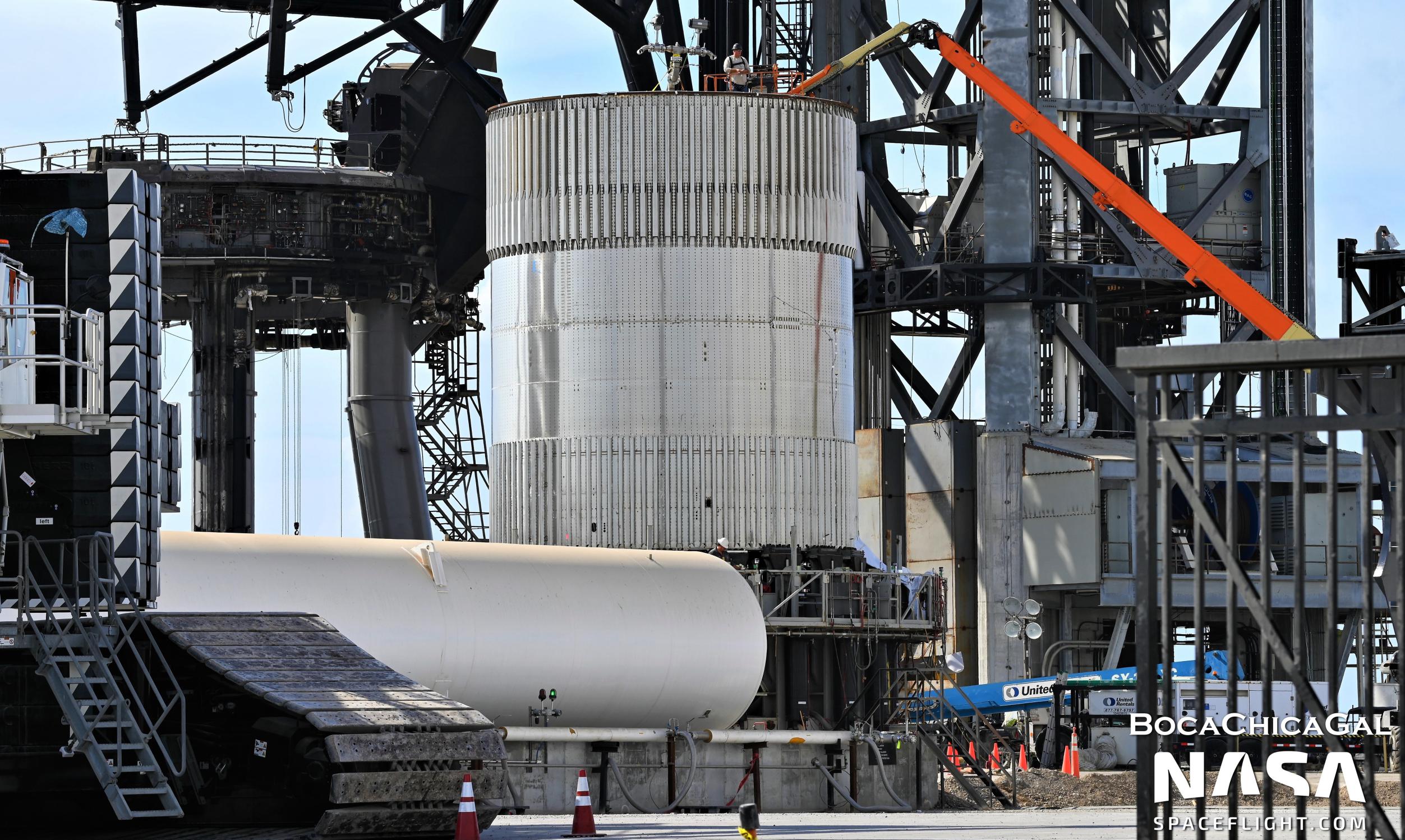
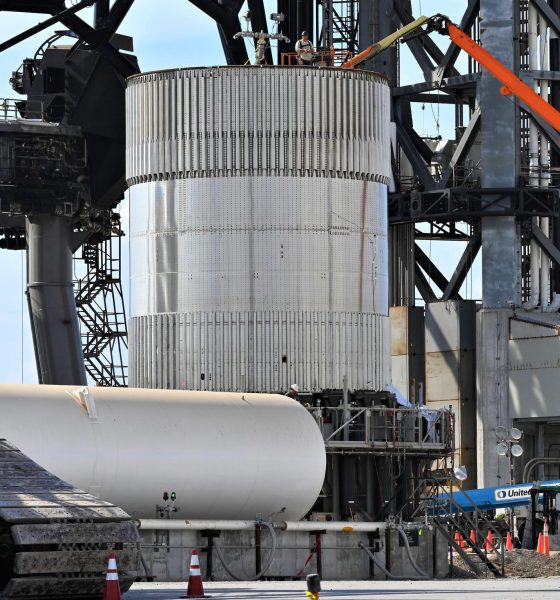
News
SpaceX Super Heavy tank prototype survives crush testing
A tank prototype similar to SpaceX’s next-generation Super Heavy rocket booster has survived a series of tests that repeatedly attempted to destroy it.
Known as Booster 7.1 or B7.1, the tank is the latest in a long line of ‘test tanks’ designed to verify the performance of Starship and Super Heavy and qualify new designs and manufacturing techniques without risking an entire upper stage or booster. In general, that means that test tanks are as minimal as possible and much shorter than either Starship stage, but they’re also assembled out of nine-meter-wide (30 ft) steel barrels and domes almost identical to the sections that make up Starship and Super Heavy.
For most of the duration of SpaceX’s steel Starship program, ‘test tank’ work has followed a fairly consistent and linear development path, where tanks were used to verify design changes before those changes were implemented on more expensive prototypes. B7.1 firmly ignored that norm.
While it’s not an exact match, the tank – built out of two stacked rings and dome sections and measuring about 11 meters (~36 ft) tall – has a Super Heavy thrust structure (where Raptor engines would attach) and external stiffeners known as stringers that are (mostly) exclusive to Starship boosters.
As its name suggests, B7.1 shares many of the significant design changes that SpaceX had already implemented on Super Heavy Booster 7 (B7). The company began testing B7 months before B7.1, subjecting the full-size booster to multiple cryogenic proof tests and Raptor thrust simulation testing to qualify its new thrust ‘puck’ and several other structural changes. SpaceX began testing B7.1 in late June, shortly before Super Heavy Booster 7 was damaged by an unplanned explosion that halted its first Raptor engine test campaign. B7.1 testing then restarted in mid-July and was completed by the end of the month.
For unknown reasons, SpaceX’s decision to build and test Booster 7 before B7.1 meant that any significant issues discovered during subsequent B7.1 testing could disqualify the booster for flight testing, potentially wasting the months of work and tens of millions of dollars already invested in the prototype. Ultimately, though, B7.1 appeared to sail through multiple cryogenic proofs and crush tests without any catastrophic issues. Only on the last crush test did any part of the test tank finally give way, and the resulting damage was minor.
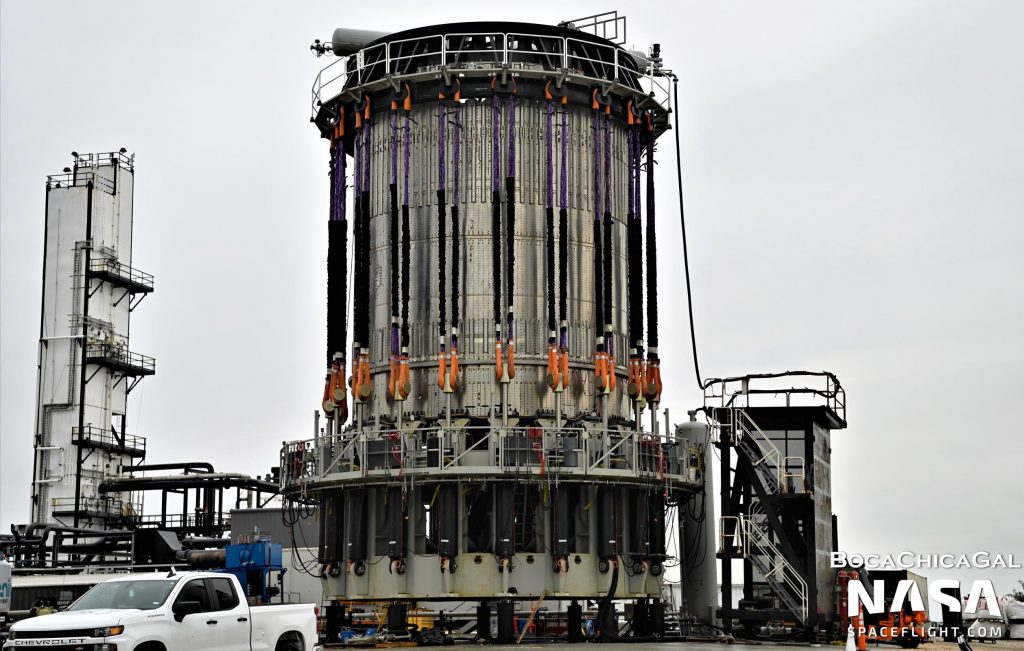
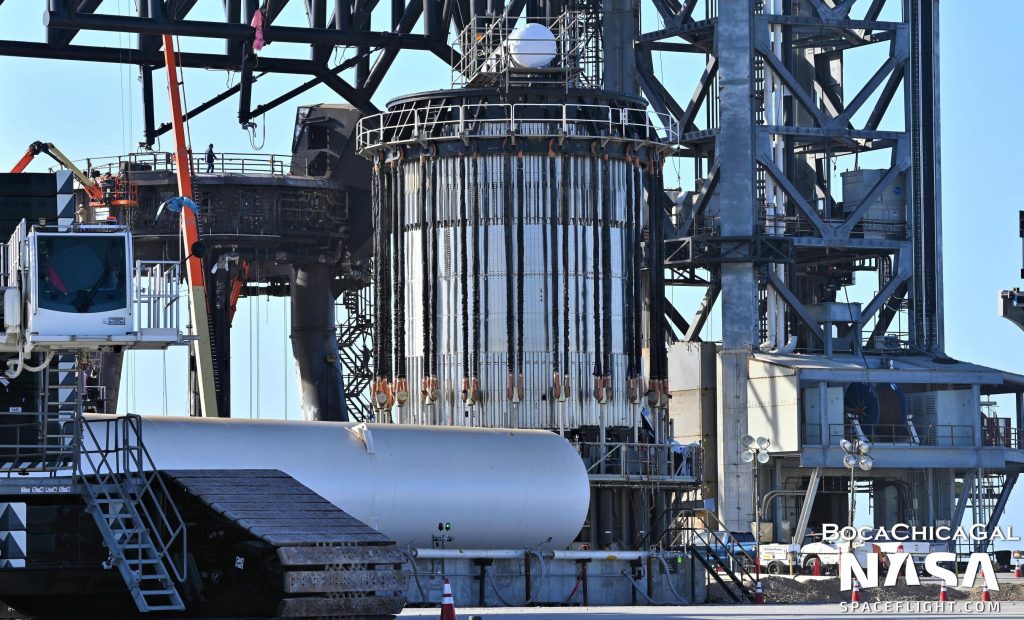
B7.1’s testing made use of a relatively new two-piece stand. The tank was first installed on a sturdy base using clamps similar to those on the Starbase orbital launch site’s (OLS) launch mount. Then, a hat-like structure was placed on top of the tank, resting on the surface that a Starship upper stage would sit on during launch. Massive ropes were finally dropped down to attach to hydraulic cylinders on the base. Once B7.1 was loaded with benign cryogenic liquid nitrogen (LN2), replicating most of the thermal and mechanical stresses of real oxygen/methane propellant, the hydraulic cylinders retracted, pulling the cap down to evenly exert massive crushing forces down the vertical axis of the test tank. Simultaneously, additional rams installed underneath B7.1 may have simulated the thrust of 13 central Raptor engines.
It’s unclear what exactly SpaceX was testing. The goal of the test could have been as simple as verifying that Super Heavy Booster 7 can withstand the weight of a fully-fueled Starship (~1350 tons / ~3M lb) sitting on top of it. It could have also been used to simulate an entire orbital launch from Super Heavy’s perspective, replicating many of the forces Starship boosters will experience between liftoff and landing. Given that Booster 7’s upgraded thrust puck had already made it through stress testing, B7.1 didn’t have much to add there, but it may have been useful for estimating the compressive strength of the current Super Heavy booster design.
Regardless of what B7.1 did or didn’t prove, it did so with very little drama. After four long days of testing, at least two of which involved attempting to crush the tank, the only truly noteworthy visual event was evidence of a slight buckle near the top of the tank during its last crush test. A few days later, with the test stand ‘cap’ removed, B7.1 survived one final test in which SpaceX likely attempted to pressurize the tank until it burst. Instead, the tank didn’t so much as develop a leak, reiterating – contrary to their occasional tin-can-like appearances – just how sturdy Starship and Super Heavy really are.
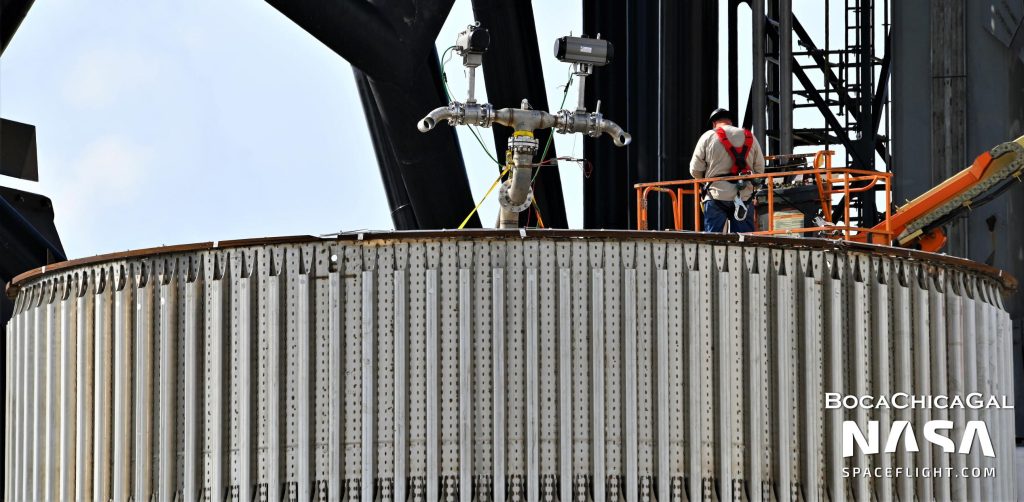
With nothing more to give, SpaceX will likely scrap B7.1. Meanwhile, Super Heavy Booster 7 remains stuck inside one of SpaceX’s Starbase assembly bays after being forced back to the factory by unintentionally explosive testing. The fate of that booster is unclear but SpaceX has removed all or most of its 33 Raptor engines over the last few weeks while simultaneously expediting work on Booster 8, which may ultimately take B7’s place.

Elon Musk
Tesla’s Elon Musk: 10 billion miles needed for safe Unsupervised FSD
As per the CEO, roughly 10 billion miles of training data are required due to reality’s “super long tail of complexity.”

Tesla CEO Elon Musk has provided an updated estimate for the training data needed to achieve truly safe unsupervised Full Self-Driving (FSD).
As per the CEO, roughly 10 billion miles of training data are required due to reality’s “super long tail of complexity.”
10 billion miles of training data
Musk comment came as a reply to Apple and Rivian alum Paul Beisel, who posted an analysis on X about the gap between tech demonstrations and real-world products. In his post, Beisel highlighted Tesla’s data-driven lead in autonomy, and he also argued that it would not be easy for rivals to become a legitimate competitor to FSD quickly.
“The notion that someone can ‘catch up’ to this problem primarily through simulation and limited on-road exposure strikes me as deeply naive. This is not a demo problem. It is a scale, data, and iteration problem— and Tesla is already far, far down that road while others are just getting started,” Beisel wrote.
Musk responded to Beisel’s post, stating that “Roughly 10 billion miles of training data is needed to achieve safe unsupervised self-driving. Reality has a super long tail of complexity.” This is quite interesting considering that in his Master Plan Part Deux, Elon Musk estimated that worldwide regulatory approval for autonomous driving would require around 6 billion miles.
FSD’s total training miles
As 2025 came to a close, Tesla community members observed that FSD was already nearing 7 billion miles driven, with over 2.5 billion miles being from inner city roads. The 7-billion-mile mark was passed just a few days later. This suggests that Tesla is likely the company today with the most training data for its autonomous driving program.
The difficulties of achieving autonomy were referenced by Elon Musk recently, when he commented on Nvidia’s Alpamayo program. As per Musk, “they will find that it’s easy to get to 99% and then super hard to solve the long tail of the distribution.” These sentiments were echoed by Tesla VP for AI software Ashok Elluswamy, who also noted on X that “the long tail is sooo long, that most people can’t grasp it.”
News
Tesla earns top honors at MotorTrend’s SDV Innovator Awards
MotorTrend’s SDV Awards were presented during CES 2026 in Las Vegas.

Tesla emerged as one of the most recognized automakers at MotorTrend’s 2026 Software-Defined Vehicle (SDV) Innovator Awards.
As could be seen in a press release from the publication, two key Tesla employees were honored for their work on AI, autonomy, and vehicle software. MotorTrend’s SDV Awards were presented during CES 2026 in Las Vegas.
Tesla leaders and engineers recognized
The fourth annual SDV Innovator Awards celebrate pioneers and experts who are pushing the automotive industry deeper into software-driven development. Among the most notable honorees for this year was Ashok Elluswamy, Tesla’s Vice President of AI Software, who received a Pioneer Award for his role in advancing artificial intelligence and autonomy across the company’s vehicle lineup.
Tesla also secured recognition in the Expert category, with Lawson Fulton, a staff Autopilot machine learning engineer, honored for his contributions to Tesla’s driver-assistance and autonomous systems.
Tesla’s software-first strategy
While automakers like General Motors, Ford, and Rivian also received recognition, Tesla’s multiple awards stood out given the company’s outsized role in popularizing software-defined vehicles over the past decade. From frequent OTA updates to its data-driven approach to autonomy, Tesla has consistently treated vehicles as evolving software platforms rather than static products.
This has made Tesla’s vehicles very unique in their respective sectors, as they are arguably the only cars that objectively get better over time. This is especially true for vehicles that are loaded with the company’s Full Self-Driving system, which are getting progressively more intelligent and autonomous over time. The majority of Tesla’s updates to its vehicles are free as well, which is very much appreciated by customers worldwide.
Elon Musk
Judge clears path for Elon Musk’s OpenAI lawsuit to go before a jury
The decision maintains Musk’s claims that OpenAI’s shift toward a for-profit structure violated early assurances made to him as a co-founder.

A U.S. judge has ruled that Elon Musk’s lawsuit accusing OpenAI of abandoning its founding nonprofit mission can proceed to a jury trial.
The decision maintains Musk’s claims that OpenAI’s shift toward a for-profit structure violated early assurances made to him as a co-founder. These claims are directly opposed by OpenAI.
Judge says disputed facts warrant a trial
At a hearing in Oakland, U.S. District Judge Yvonne Gonzalez Rogers stated that there was “plenty of evidence” suggesting that OpenAI leaders had promised that the organization’s original nonprofit structure would be maintained. She ruled that those disputed facts should be evaluated by a jury at a trial in March rather than decided by the court at this stage, as noted in a Reuters report.
Musk helped co-found OpenAI in 2015 but left the organization in 2018. In his lawsuit, he argued that he contributed roughly $38 million, or about 60% of OpenAI’s early funding, based on assurances that the company would remain a nonprofit dedicated to the public benefit. He is seeking unspecified monetary damages tied to what he describes as “ill-gotten gains.”
OpenAI, however, has repeatedly rejected Musk’s allegations. The company has stated that Musk’s claims were baseless and part of a pattern of harassment.
Rivalries and Microsoft ties
The case unfolds against the backdrop of intensifying competition in generative artificial intelligence. Musk now runs xAI, whose Grok chatbot competes directly with OpenAI’s flagship ChatGPT. OpenAI has argued that Musk is a frustrated commercial rival who is simply attempting to slow down a market leader.
The lawsuit also names Microsoft as a defendant, citing its multibillion-dollar partnerships with OpenAI. Microsoft has urged the court to dismiss the claims against it, arguing there is no evidence it aided or abetted any alleged misconduct. Lawyers for OpenAI have also pushed for the case to be thrown out, claiming that Musk failed to show sufficient factual basis for claims such as fraud and breach of contract.
Judge Gonzalez Rogers, however, declined to end the case at this stage, noting that a jury would also need to consider whether Musk filed the lawsuit within the applicable statute of limitations. Still, the dispute between Elon Musk and OpenAI is now headed for a high-profile jury trial in the coming months.








